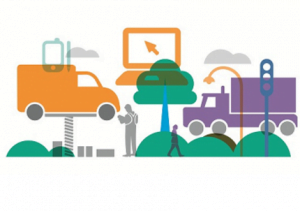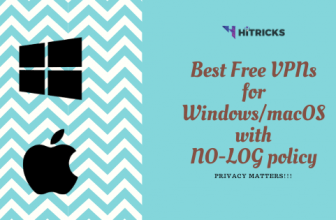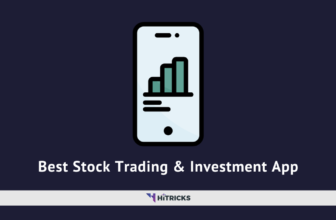5 Best Fleet Management Software
Computer programs for fleet management are already the present, not the future.
The constant rise in fuel prices leads to an increase in the cost of goods and services in all sectors of the economy. Yet, it is not always possible to compensate for the increase in the cost of fuel by a simple increase in prices for consumers. So, the business needs to look for other ways to maintain profit levels. For example, by increasing the efficiency of cost management for cargo transportation. It is achieved through the use of modern fleet management systems.
The vehicle management system is especially important for manufacturing companies. As well as for distributors of consumer goods, which deliver goods to tens and hundreds every day.
In today’s post, we will have a look at the best fleet management softwares that you can use to maintain the transportation sector smoothly. Here’s an overview:
Why do you need fleet management software?
Speed and accuracy of decision-making incorporating transport management are critical. Modern automation tools for fleet management have become indispensable for solving such problems. Yet, any information system is just a tool to help optimize business processes. Without proper administrative support, remote worker tracking, and stock data api, the implementation of a management system won’t be perfect.
Before embarking on the implementation of a control system, the customer and the developer must define the goals. They are formed by the customer based on the volume of cargo transportation. As well as on the size and structure of the vehicle fleet, the number of customers, and the business strategy.
Levels of fleet management programs:
Depending on the type and scale of the business, four levels of fleet management automation can be distinguished.
First level – elementary
This level of automation is typical for small companies that have a fleet of no more than 2-3 vehicles. To manage such a fleet, 1C and Excel are usually used. This is often enough to record actual costs and do the accounting for the transport company. Plus to manage transport documents, keep track of the labor costs, and calculate wages. Fuel consumption and mileage are monitored based on data provided by drivers and receipts. There is no cost planning. Problems are resolved as they arise. With an increase in the vehicle fleet to 5-8 units, management processes become more complicated. The company is forced to move to the second level of automation.
Second level – more planning
At the second level, it becomes necessary to plan maintenance and repair work, to control more. A separate staff unit appears – a “dispatcher” who handles the distribution of tasks between drivers. A dispatcher also monitors traffic, generates reports for accounting and management. To manage the fleet at this level, specialized programs and services are used, such as 1C: Fleet Management.
Third level – GPS introduction
In companies with a fleet of 12-15 units, it becomes difficult to control the work of drivers and the movement of vehicles by one dispatcher. The introduction of GPS or GLONASS satellite tracking allows simplifying transport control. the schedule of delivery of goods, and compliance with official discipline. The American Public Transportation Association estimated that around half of all buses in the US already used a tracking system in 2009. Nowadays, the fleet tracking system is more essential than it has ever been.
Also, at this level fuel cards are used to prevent fuel theft.
Fourth level – big software
At the fourth level of automation, there are companies for which all the above tools are not enough.
The transition from the third level to the fourth is necessary when the number of errors and failures in logistics increases. Thus, operating costs become excessively high and difficult to predict.
In this situation, the logistics department needs to install an automated route planning system. Also, the transport department needs a professional management system. It has to combine the tools of the three previous levels.
In this case, Akveo recommends software that combines a monitoring system and online applications. Also at the same time, it has to provide time and fuel accounting. As well as a system of electronic waybills and the formation of financial and management reports. Combining such a large set of tools in one management system can reduce the cost of managing and operating a fleet of vehicles by 20-30%.
How to identify good fleet software?
No doubt that any automatization is better than no one. But still, if you are paying for the fleet management system, you need to make sure you are not wasting your money. Plus, bad fleet management can cost your company way more than the price for fleet software development.
Thus, you need to thoroughly check and test the fleet management program you want to apply for your business.
A reliable fleet software helps you to automate the following processes:
- Vehicle cost management. Their accounting, forecasting, and complete transparency.
- Maintenance of the rolling stock. All maintenance must be done on time, spare parts and consumables must be changed regularly without overrun.
- Quality control at every stage. The best spare parts, the best repairmen that are available at the moment. Complete transparency and quality suppliers (external and internal).
If the fleet software you want to use does not help you with one or more of those objectives, you may want to consider trying another one. For example, consider looking at free fleet maintenance software from Akveo company.
Best Fleet Management Programs
Here is the list you might want to consult when choosing fleet software.
1. Geotab
This fleet software has an easy installation option – you don’t need to be an IT master. Also, this vehicle management system administers data of the current state of your fleet and driver statements. Everything is done on one platform, which increases usability.
It supervises the driver’s uptime to make sure he is complying with HOS rules. This significantly reduces the number of road accidents. It will also handle DTCs and engine faults, and report fuel theft. Plus, every day you will receive automatic odometer readings.
2. Avrios
Avrios is one of the leaders of the fleet software market. It is affordable, very easy to use, and also useful for managing different workflows.
This car fleet management system has an intuitive interface that is a bonus for workers of all levels.
The reporting system is another useful part of the platform. Once you’ve entered all the data about your car, driver, and fuel into the system, Avrios collects that data into standard reports. Later you can view them and use them to make decisions.
However, it lacks the vehicle tracking features found on other platforms.
3. Telematics
This fleet maintenance software is made by the famous TomTom company.
Using the TomTom fleet software allows you to access everywhere – without prior installation. The products include online fleet management apps, tracking tools, and terminals for workers.
Also, the system offers live GPS tracking. It provides instant alerts, which help fast communication between employees. Plus, it is great in facilitating eco-aware, safe driving.
4. Fleetio
Fleetio simplifies fleet tracking. It presents a lot of data that initially calls into question leverage. Plus, you can add up vehicles and edit workflows. You will also have a real-time map to follow the locations on the road in live mode.
Fleetio includes quite a few pre-configured reports based on all aspects of the fleet. These reports include the registration of all vehicle services and a description of each part of each vehicle. They are very useful to better understand their fleet and what is happening in it.
5. OnFleet
OnFleet uses simple software to manage and evaluate shipments. This fleet management system makes it easy to maintain last-mile delivery. It also manages intuitive route planning, real-time tracking, shipping, analysis, and more.
Features include an intuitive dashboard and various ways to filter data. Plus, you can expect to track key metrics and optimize the routes with international support. For the customer-oriented business, the main bonuses are accurate arrival times, real-time alerts. Don’t forget the automatic delivery of messages to customers. Also, you will have various apps for integration.
Nirmal Sarkar is a Biotechnologist from the city of Joy, Kolkata. He is the founder of this blog and covers a wide range of topics from Gadgets to Software to Latest Offers. You can get in touch with him via nirmal@hitricks.com










